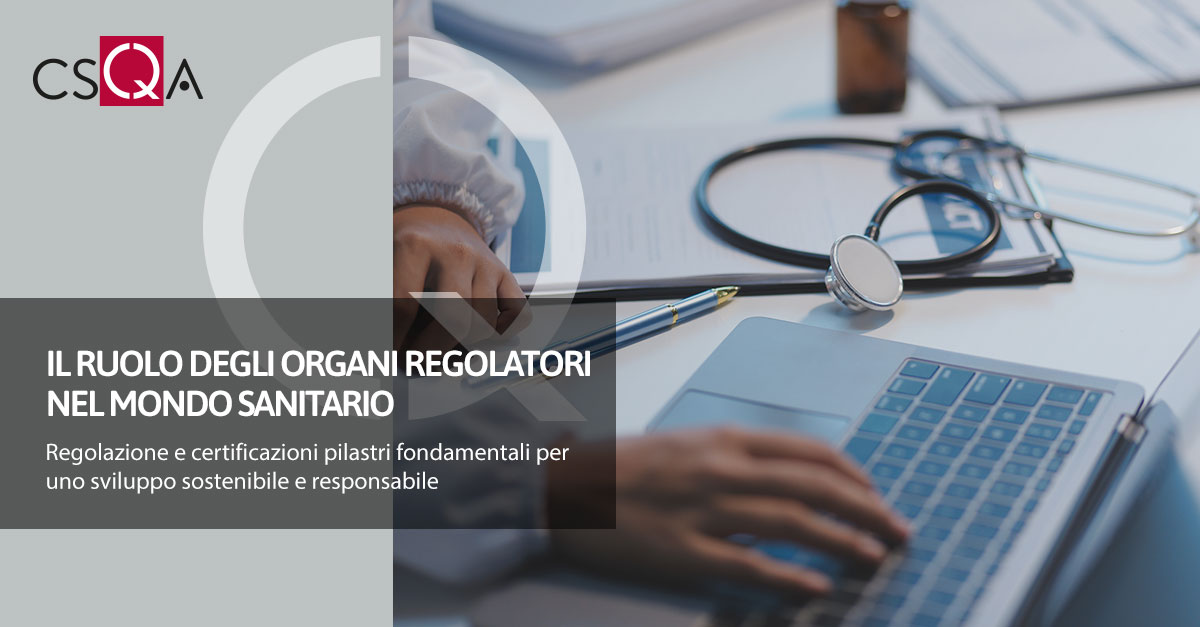 In the complex healthcare ecosystem, quality of care, patient safety, and technological innovation do not emerge by chance: they are the result of a coordinated set of standards, guidelines, certifications, and controls.
In the complex healthcare ecosystem, quality of care, patient safety, and technological innovation do not emerge by chance: they are the result of a coordinated set of standards, guidelines, certifications, and controls.In this context, regulatory bodies, scientific societies and supervisory systems play a crucial role , influencing every phase of the care pathway.
Regulatory Bodies: Guarantors of Safety and Compliance
National and international regulatory bodies, such as the Italian Medicines Agency (AIFA) or the Food and Drug Administration (FDA) in the United States , set standards for the authorization of drugs, medical devices, and innovative therapies.These bodies not only evaluate the efficacy and safety of new treatments, but also define operational protocols that hospitals and healthcare facilities must follow.
Through periodic checks, inspections and audit procedures, regulatory bodies ensure that clinical practices comply with quality standards , minimising risks to patients.
In this context, system certifications, such as ISO 9001 or hospital accreditations, take on great importance, as they attest to the adoption of structured processes and compliance with international best practices.
Scientific societies: promoters of guidelines, skills and professional development
Scientific societies, made up of experts and professionals in the field, develop clinical guidelines, evidence-based recommendations, and updated therapeutic protocols.These tools support professionals in choosing the most effective treatments, helping to standardize care pathways and reduce disparities between different facilities.
In addition, they promote professional skills certifications , which attest to the specific training of doctors, nurses and healthcare technicians in specialist areas.
Continuing education and professional certifications enhance patient safety and foster a culture of clinical excellence.
Surveillance systems: monitoring and continuous improvement
In addition to regulation and guidelines, healthcare safety depends on oversight systems that monitor compliance and collect data on clinical outcomes.Pharmacovigilance systems, clinical incident registries, and adverse event reporting platforms enable the timely identification of critical issues and areas for improvement.
These systems also support the effectiveness of system and professional certifications: they allow verification that standards are actually applied in daily practice, providing useful data for regulatory updates and ongoing training.
The balance between quality, safety, innovation and certifications
Coordination between regulatory bodies, scientific societies, and oversight systems creates a resilient and safe healthcare ecosystem, where innovation is encouraged but carefully monitored.System certifications ensure efficient processes that comply with international standards, while competency certifications ensure that professionals have the necessary training to apply best clinical practices.
In short, these players do not operate in isolation: their synergy, supported by solid certifications, is essential to ensuring that every patient receives effective, safe, and evidence-based care.
In the modern healthcare world, regulation and certification are not obstacles to innovation, but rather fundamental pillars that enable sustainable and responsible development. (Source: Massinmo Dutto, https://magazine.icmed.net /)